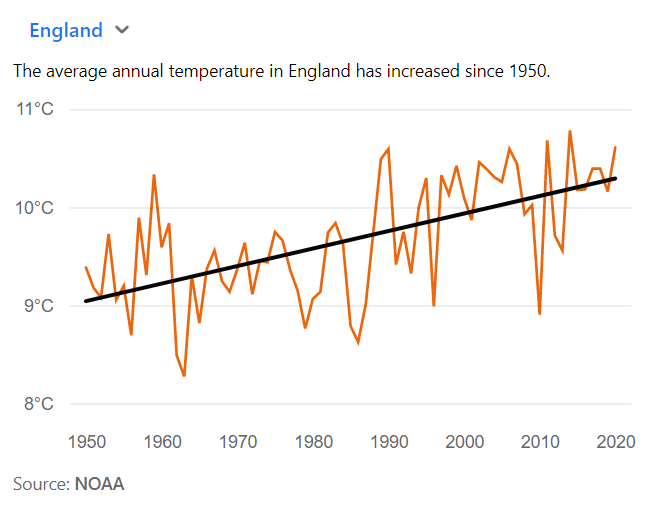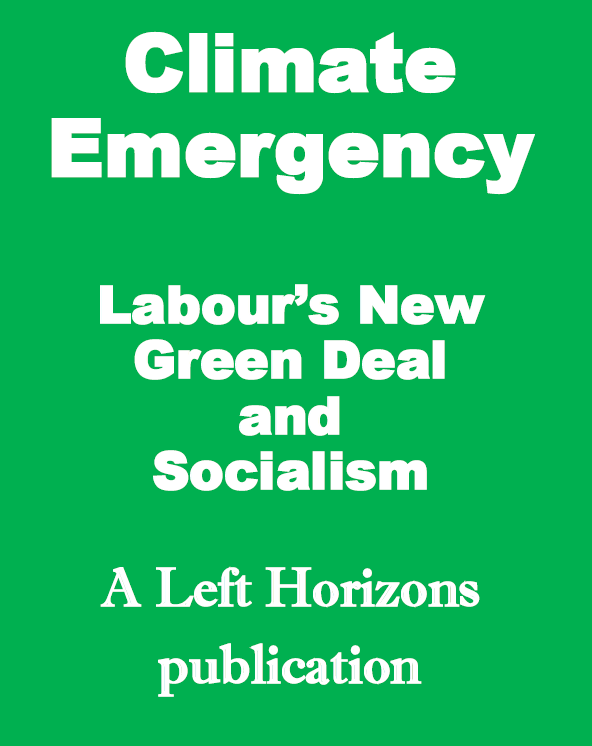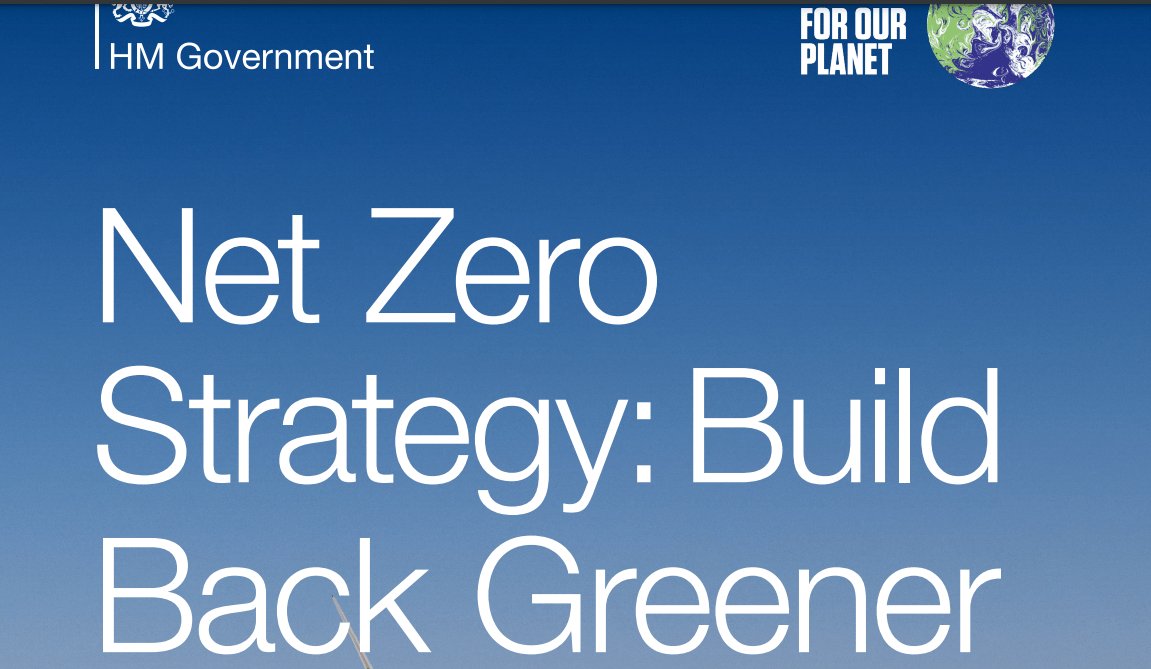Part 2 of a 2-part article on the climate crisis, by John Pickard
In the same week that the IPCC published its latest alarming report on climate change, and when the UN Secretary-General said that governments were “lying” on their zero-carbon policies, the UK government has proved Antonio Guterres right by publishing its energy strategy.
In our previous article, we reported on the IPCC findings, that the current trajectory of global warming was heading towards a figure far higher than the original target of ‘only’ a 1.5oC rise. The British government, host of the COP26 conference in Glasgow last November, claims to be following a policy towards net zero carbon, but where their energy policy pretends to add substance to that, in truth, it does the exact opposite.
The UK Government boasted on its website a year ago that it “will set the world’s most ambitious climate change target into law to reduce emissions by 78% by 2035 compared to 1990 levels”. There are a few elements in the published strategy that point to the development of renewable energy sources, but using the Ukraine war as a pretext, much of the short term strategy, and possibly longer, is still biased towards fossil fuels.
Offshore wind power is expected to increase five-fold, but despite the fact that opinion polls are supportive of onshore wind generation, which is far cheaper than offshore, it looks like Johnson has given way to those Tory who are offended by the sight of turbines, offering only consultations on onshore projects. According to the Guardian (April 7), “There are 649 wind and solar projects that already have planning permission. These would save more gas that the UK imports from Russia. But the strategy promises nothing to cut the planning regulations that David Cameron used to strangle onshore wind development and large-scale solar farms.”
Solar currently generates more electricity than offshore wind
There are no firm plans to increase investment or incentives to exploit solar energy, which at present generates about 40% more than offshore wind and is six times cheaper than electricity from gas-fired power stations. Removing VAT from domestic SV panels hardly helps households, when a typical roof might require thousands of pounds-worth of panels, before VAT.
Putting SV panels on local authority and government buildings could generate a huge amount of electricity, and in localities where it is needed, but instead of plans on this scale – which in a climate emergency one would expect – Johnson has limited the government only to the “ambition” to increase solar. There is clearly not enough money in it yet for his business friends.
Similarly, there is no serious intention to invest in tidal energy, which could offer a regular source of energy for over a hundred years, once the barrages are installed; yet there are at least three significant UK sites where a tidal dams could be built.

Nuclear energy, often touted as the ‘clean’ alternative to fossil fuels, is set to become a major feature of electricity production in the future, producing a quarter of all needs by 2050. This is despite the fact that nuclear electricity is far more expensive per unit than renewable energy, so expensive in fact, that the government has to promise a subsidy to the generating companies to keep the retail cost of their energy somewhere near market levels.
Nuclear power plants: always late and over budget
Each new large power station – and several more are suggested in the strategy – will cost tens of billions of pounds and they have a track-record of being delayed in coming on stream and well over budget. Even the smaller ‘modular’ nuclear reactors, now being developed by companies like Rolls Royce, will cost hundreds of millions each.
The nuclear energy component is a long-term strategy, by the sheer length of time needed to build and commission new reactors, and it cannot even remotely be part of a ‘stop-gap’ to cover for the absence of Russian oil and gas. Supporting the nuclear energy has more to do with the massive contracts that will go to the manufacturing and construction companies – that, and the need to maintain the technological basis for nuclear weapons – than a rational energy policy as such.
As we have argued in previous articles, nuclear power stations can produce energy without interruption and regardless of weather conditions, but every new plant will add to the steadily-growing mountain of highly dangerous nuclear waste that no-one really knows what to do with.
One of the main lessons we can learn from the government’s energy strategy, is that the oil and gas giants still have the Tory Party in their pockets, and that therefore North Sea oil and gas will still have a big role to play in the short and medium future. Indeed, new exploration and exploitation will be encouraged.
As Tory Minister, Jacob Rees-Mogg revealed on LBC Radio, the government wants to exploit “every last cubic-inch of North Sea gas.” The government’s own independent adviser on zero-carbon, the Committee on Climate Change, advised against the further expansion of North Sea deposits, but in terms influencing government opinion, it cannot compete with the giant oil, gas and drilling companies.
New gas licences today will produce no gas for years or decades
Yet exploration and exploitation of new gas fields are again long term projects, a new field licensed today would not produce gas or oil for years or decades. So allowing more exploration and new extraction licenses stands in flat contradiction to the idea of an economy of “95% low carbon” by 2030.
Philip Evans, oil and gas campaigner for Greenpeace UK told the Guardian, “Rushing to sign off new fossil fuel licences that’ll take decades to get going would be no help in standing up to Vladimir Putin, and would actively make the climate crisis worse. The quickest and smartest solution to the energy challenge and the cost of living crisis is a huge push to tackle energy waste. If your bathtub is leaking, you should fix the leak – not just turn up the taps.” The government’s promises of zero-carbon by mid-century are not so much compromised as sunk without trace.

The government also appears to be having a fresh look at fracking – by a “review” of the scientific data. In every case where fracking has been considered up to now there has been huge local opposition, with communities fearful about quakes and water supplies being compromised. It may be that the government is merely appeasing the Net Zero Scrutiny Group of Tory MPs (see inset) without any serious intention of restarting fracking drilling, but it is impossible to tell. Certainly one of the main companies, Cuadrilla, is hoping it is a green light for them as its chief executive suggested the government move could represent “a tentative first step towards overturning the moratorium” on fracking
Following that moratorium, Johnson resisted calls for the permanent closure of the two wells that had been started in Lancashire, both of which were due to be closed in June. This, again, is another appeasement the Net Zero Scrutiny Group, which has pushed for them to be kept open.
Government plans on hydrogen production, unfortunately, are based on so-called ‘blue hydrogen’ which is produced from natural gas, and which still generates some atmospheric carbon dioxide. Hydrogen produced from water by purely electrolytic methods produce no waste carbon emissions. Some studies show that blue hydrogen releases more carbon into the atmosphere than burning coal and for all it is a nice-sounding expression, it is, like Carbon Capture and Storage, a technological ‘fig-leaf’ to greenwash the continued extraction of natural gas.
An important message filed in the bin
But one of the most important omissions from the energy strategy is a policy household insulation. It was only in March that the Guardian reported that “Greenpeace, Friends of the Earth, Save the Children and Age UK are among 33 civil society groups that have written to the prime minister, Boris Johnson, the chancellor of the exchequer, Rishi Sunak, and the business secretary, Kwasi Kwarteng, to call for £3.6bn for insulation grants to all households, and an extra £4bn by 2025 to install heat pumps in place of gas boilers”.
That was clearly a message filed in the bin, because Johnson and Sunak are offering nothing, bar an advice website. Yet only 40% of UK homes have sufficient loft insulation, and the overall standard of UK home insulation is amongst the worst in Europe. Even the government’s Climate Change Committee, responding to the energy strategy publication noted (somewhat tactfully), “it is still disappointing not to see more on energy efficiency and on supporting households to make changes that can cut their energy bills now. Government has reiterated its commitment to do more and we look forward to seeing details in the coming months”.

Emma Pinchbeck, chief executive of the trade body Energy UK, also told the Guardian, “The benefits of making our homes energy efficient are so overwhelming that nobody seriously disagrees with its importance, but as a country our efforts so far have got nowhere near the scale required”.
The government is claiming that its energy strategy offers the promise of “greater energy self-sufficiency with cheaper bills”, but there is not a chance of this. As the Financial Times remarked, (April 6) “Few if any of the measures contained in the strategy will relieve the immediate financial pressure on British households from spiralling energy bills”.
Oil and gas giants raking in windfall profits
Twenty-two million UK households have already seen their energy bills rise by over 50% to an average of nearly £2,000 a year. These bills will rise again in October, when the energy price cap is lifted again, possibly as high as £3,000. While the oil and gas giants that pulling Johnson’s strings will rake in super-profits, ordinary working class people will pay a bitter price, and there is nothing whatsoever in this energy strategy that will change that.
Last June, the Climate Change Committee reported to Parliament. Referring to government promises on climate change. It noted that “it has been too slow to follow these with delivery. This defining year for the UK’s climate credentials… With every month of inaction, it is harder for the UK to get on track”. Boris Johnson’s government, in a “defining year”, is living proof of Guterres’ comment that governments are lying on climate change.
There is little in the government’s agenda that points to a reduction of carbon emissions on the lines of promises made, nor any relief from the crisis in the cost of energy as it affects the overwhelming majority. As they do on everything else, the Tories are lying to their back teeth on energy. This government is incapable of “building back” anything, never mind “building back greener” and the labour movement must advance its own green agenda.
Labour needs to campaign for the public ownership of all the gas, oil and energy utilities, which polls show are popular measures. It needs to offer a large-scale plan for massive investment in renewable energy, particularly solar, wind and tidal, which would give a huge boost to jobs, technology, and industry. The best thing we can do to develop a carbon-free economy, and at the same time to tackle the squeeze on living standards, is to fight harder than ever for an end to this millionaires’ government.



